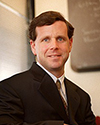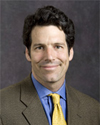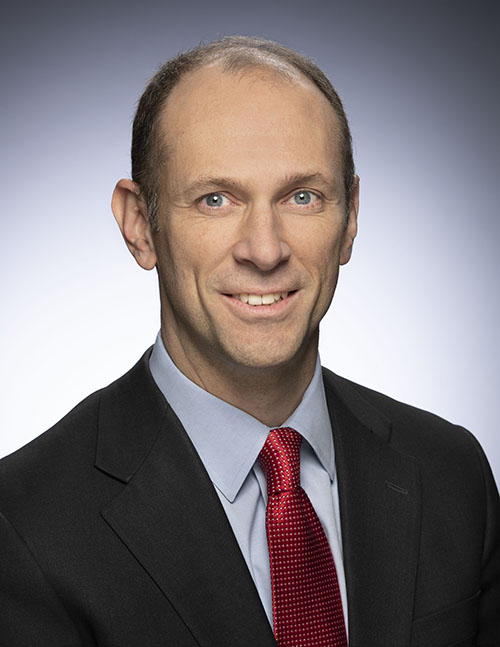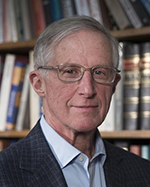Question A:
If the Fed changed its inflation target from 2% to 4%, the long-run costs of inflation for households would be essentially unchanged.
Responses
© 2025. Kent A. Clark Center for Global Markets.
12%
10%
0%
38%
17%
24%
0%
Responses weighted by each expert's confidence
© 2025. Kent A. Clark Center for Global Markets.
0%
51%
20%
29%
0%
Question B:
Raising the inflation target to 4% would make it possible for the Fed to lower rates by a greater amount in a future recession.
Responses
© 2025. Kent A. Clark Center for Global Markets.
12%
12%
0%
7%
5%
52%
12%
Responses weighted by each expert's confidence
© 2025. Kent A. Clark Center for Global Markets.
0%
10%
4%
67%
19%
Question A Participant Responses
Participant |
University |
Vote |
Confidence |
Bio/Vote History |
|---|---|---|---|---|
 Daron Acemoglu |
MIT | Bio/Vote History | ||
|
|
||||
 Alberto Alesina |
Harvard | Bio/Vote History | ||
|
|
||||
 Joseph Altonji |
Yale | Bio/Vote History | ||
|
|
||||
 Alan Auerbach |
Berkeley | Bio/Vote History | ||
|
|
||||
 David Autor |
MIT | Bio/Vote History | ||
|
|
||||
 Katherine Baicker |
University of Chicago | Did Not Answer | Bio/Vote History | |
|
|
||||
 Abhijit Banerjee |
MIT | Bio/Vote History | ||
|
|
||||
 Marianne Bertrand |
Chicago | Bio/Vote History | ||
|
|
||||
 Markus Brunnermeier |
Princeton | Bio/Vote History | ||
|
since inflation distorts the portfolio choice, Brunnermeier & Sannikov "On the Optimal Inflation Rate" (AER PP).
Also 4% can't be ignored
|
||||
 Raj Chetty |
Harvard | Did Not Answer | Bio/Vote History | |
|
|
||||
 Judith Chevalier |
Yale | Did Not Answer | Bio/Vote History | |
|
|
||||
 David Cutler |
Harvard | Bio/Vote History | ||
|
|
||||
 Angus Deaton |
Princeton | Bio/Vote History | ||
|
|
||||
 Darrell Duffie |
Stanford | Bio/Vote History | ||
|
|
||||
 Aaron Edlin |
Berkeley | Bio/Vote History | ||
|
|
||||
 Barry Eichengreen |
Berkeley | Bio/Vote History | ||
|
Assuming that the change did not also compromise the credibility of the Fed's (new) inflation target.
|
||||
 Liran Einav |
Stanford | Bio/Vote History | ||
|
|
||||
 Ray Fair |
Yale | Bio/Vote History | ||
|
|
||||
 Amy Finkelstein |
MIT | Bio/Vote History | ||
|
|
||||
 Pinelopi Goldberg |
Yale | Did Not Answer | Bio/Vote History | |
|
|
||||
 Austan Goolsbee |
Chicago | Bio/Vote History | ||
|
If they did this now, costs would be unchanged because they have not even been able to get to 2 so not credible to promise 4
|
||||
 Michael Greenstone |
University of Chicago | Bio/Vote History | ||
|
I tend to agree but I think the evidence is more based on intuition and theory than on empirical evidence.
|
||||
|
Robert Hall |
Stanford | Did Not Answer | Bio/Vote History | |
|
|
||||
 Oliver Hart |
Harvard | Bio/Vote History | ||
|
I think that people can cope with low rates of inflation well, and 4% falls into that category. I wouldn't want to go much higher though.
|
||||
 Bengt Holmström |
MIT | Bio/Vote History | ||
|
|
||||
 Caroline Hoxby |
Stanford | Bio/Vote History | ||
|
|
||||
 Hilary Hoynes |
Berkeley | Bio/Vote History | ||
|
|
||||
 Kenneth Judd |
Stanford | Bio/Vote History | ||
|
Nominal features of the tax code will drag down growth. Higher inflation may have higher uncertainty.
|
||||
 Steven Kaplan |
Chicago Booth | Bio/Vote History | ||
|
|
||||
 Anil Kashyap |
Chicago Booth | Bio/Vote History | ||
|
big retirement planning mistakes from nominal illusion would become more common&empirical regularity of more volatile inflation possible too
|
||||
 Pete Klenow |
Stanford | Bio/Vote History | ||
 Jonathan Levin |
Stanford | Bio/Vote History | ||
|
|
||||
 Eric Maskin |
Harvard | Bio/Vote History | ||
|
Even if the inflation targets are met, the answer depends on how much price indexing, etc, is done
|
||||
 William Nordhaus |
Yale | Bio/Vote History | ||
|
|
||||
 Emmanuel Saez |
Berkeley | Bio/Vote History | ||
|
|
||||
 Larry Samuelson |
Yale | Bio/Vote History | ||
|
If the target change leads to higher inflation (otherwise, why raise the target?), then households will bear the attendant costs.
|
||||
 José Scheinkman |
Columbia University | Bio/Vote History | ||
|
I am uncertain about the magnitude of costs at these levels of inflation.
|
||||
 Richard Schmalensee |
MIT | Bio/Vote History | ||
|
Hard to be very confident, particularly about the durability of the target.
|
||||
 Carl Shapiro |
Berkeley | Bio/Vote History | ||
|
|
||||
 Robert Shimer |
University of Chicago | Bio/Vote History | ||
|
The welfare cost of inflation is the area under the money demand curve. This implies a cost of about $60bn/yr from the proposed policy
-see background information here |
||||
 Richard Thaler |
Chicago Booth | Bio/Vote History | ||
|
|
||||
 Christopher Udry |
Northwestern | Bio/Vote History | ||
|
|
||||
Question B Participant Responses
Participant |
University |
Vote |
Confidence |
Bio/Vote History |
|---|---|---|---|---|
 Daron Acemoglu |
MIT | Bio/Vote History | ||
|
|
||||
 Alberto Alesina |
Harvard | Bio/Vote History | ||
|
|
||||
 Joseph Altonji |
Yale | Bio/Vote History | ||
|
|
||||
 Alan Auerbach |
Berkeley | Bio/Vote History | ||
|
|
||||
 David Autor |
MIT | Bio/Vote History | ||
|
|
||||
 Katherine Baicker |
University of Chicago | Did Not Answer | Bio/Vote History | |
|
|
||||
 Abhijit Banerjee |
MIT | Bio/Vote History | ||
|
|
||||
 Marianne Bertrand |
Chicago | Bio/Vote History | ||
|
|
||||
 Markus Brunnermeier |
Princeton | Bio/Vote History | ||
|
provided inflation target is hit (on average)
|
||||
 Raj Chetty |
Harvard | Did Not Answer | Bio/Vote History | |
|
|
||||
 Judith Chevalier |
Yale | Did Not Answer | Bio/Vote History | |
|
|
||||
 David Cutler |
Harvard | Bio/Vote History | ||
|
|
||||
 Angus Deaton |
Princeton | Bio/Vote History | ||
|
|
||||
 Darrell Duffie |
Stanford | Bio/Vote History | ||
|
|
||||
 Aaron Edlin |
Berkeley | Bio/Vote History | ||
|
|
||||
 Barry Eichengreen |
Berkeley | Bio/Vote History | ||
|
|
||||
 Liran Einav |
Stanford | Bio/Vote History | ||
|
|
||||
 Ray Fair |
Yale | Bio/Vote History | ||
|
|
||||
 Amy Finkelstein |
MIT | Bio/Vote History | ||
|
|
||||
 Pinelopi Goldberg |
Yale | Did Not Answer | Bio/Vote History | |
|
|
||||
 Austan Goolsbee |
Chicago | Bio/Vote History | ||
|
4 is not credible now. It would not give any bonus to policy making until Fed can show they could actually get to 4
|
||||
 Michael Greenstone |
University of Chicago | Bio/Vote History | ||
|
|
||||
|
Robert Hall |
Stanford | Did Not Answer | Bio/Vote History | |
|
|
||||
 Oliver Hart |
Harvard | Bio/Vote History | ||
|
Nominal rates would be higher and so could be reduced without hitting the zero lower bound. Also real rates would be lower.
|
||||
 Bengt Holmström |
MIT | Bio/Vote History | ||
|
|
||||
 Caroline Hoxby |
Stanford | Bio/Vote History | ||
|
|
||||
 Hilary Hoynes |
Berkeley | Bio/Vote History | ||
|
|
||||
 Kenneth Judd |
Stanford | Bio/Vote History | ||
|
That is technically true, but I doubt that it would justify a higher interest rate target.
|
||||
 Steven Kaplan |
Chicago Booth | Bio/Vote History | ||
|
|
||||
 Anil Kashyap |
Chicago Booth | Bio/Vote History | ||
|
assumes they are on or close to target when the recession comes.
|
||||
 Pete Klenow |
Stanford | Bio/Vote History | ||
 Jonathan Levin |
Stanford | Bio/Vote History | ||
|
|
||||
 Eric Maskin |
Harvard | Bio/Vote History | ||
|
Higher inflation rates often imply higher nominal interest rates, giving the Fed greater leeway.
|
||||
 William Nordhaus |
Yale | Bio/Vote History | ||
|
|
||||
 Emmanuel Saez |
Berkeley | Bio/Vote History | ||
|
|
||||
 Larry Samuelson |
Yale | Bio/Vote History | ||
|
We've already seen rates go as low as they can, so a higher inflation target opens up little room for lower rates.
|
||||
 José Scheinkman |
Columbia University | Bio/Vote History | ||
|
|
||||
 Richard Schmalensee |
MIT | Bio/Vote History | ||
|
|
||||
 Carl Shapiro |
Berkeley | Bio/Vote History | ||
|
|
||||
 Robert Shimer |
University of Chicago | Bio/Vote History | ||
|
|
||||
 Richard Thaler |
Chicago Booth | Bio/Vote History | ||
|
|
||||
 Christopher Udry |
Northwestern | Bio/Vote History | ||
|
|
||||

